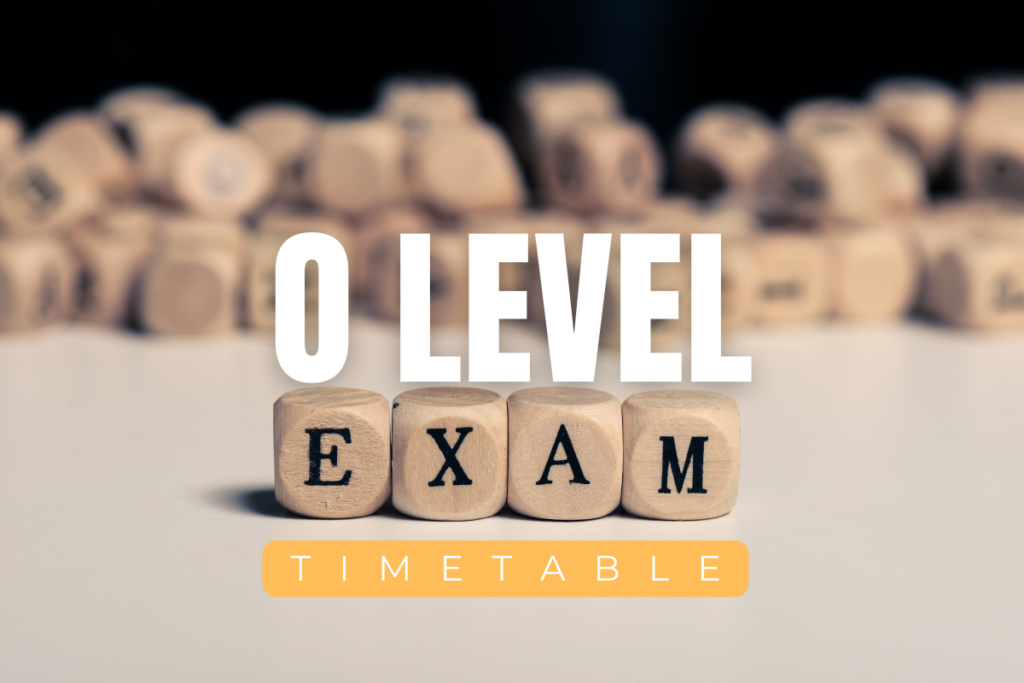O Levels and A Levels are both examinations commonly taken in the UK and other countries following the British education system. O Levels, or Ordinary Levels, are typically completed around age 16 and cover a wide range of subjects, serving as a foundation for further education or entry into the workforce.
On the other hand, A Levels, or Advanced Levels, are usually taken after O Levels, around age 18. They offer fewer subjects but with greater depth and specialization, often being a prerequisite for admission to universities and colleges.
A Levels provide advanced knowledge and skills in specific subjects, preparing students for higher education or specialized careers. In essence, while O Levels provide a broad educational base, A Levels offer more focused and advanced study in preparation for future endeavors.
What are O Levels and how do they differ from other qualifications?

O Levels, short for Ordinary Level examinations, are a set of academic qualifications typically taken by students in various countries, including the United Kingdom and its former colonies. Originally developed by the University of Cambridge International Examinations (CIE), O Levels were designed to assess students’ knowledge in a wide range of subjects at the end of their secondary education, usually around the age of 16.
Here are some key characteristics and differences of O Levels compared to other qualifications:
Subject Range
O Levels typically cover a broad range of subjects, including languages, sciences, humanities, and vocational subjects. Students usually take exams in multiple subjects, often selecting them based on their interests or future career paths.
International Recognition
O Levels have enjoyed international recognition and are often regarded as rigorous assessments of academic knowledge and skills.
They are recognized by universities and employers worldwide, although the level of recognition may vary depending on the country and institution.
Grading System
O Levels traditionally use a grading system based on alphabetical grades, such as A, B, C, D, and E, with A being the highest grade and E the lowest passing grade. Some exam boards have shifted to numerical grading systems in recent years.
Assessment Format
O Level assessments typically include written examinations, practical assessments (for subjects like science or art), and sometimes coursework components. The emphasis is often on testing students’ understanding of concepts, analytical skills, and ability to apply knowledge to real-world scenarios.
Predecessor to GCSEs
In the United Kingdom, O Levels were replaced by the General Certificate of Secondary Education (GCSE) in the late 1980s and early 1990s.
GCSEs are similar to O Levels in many ways but have undergone reforms to make them more inclusive and accessible to a wider range of students.
Regional Variations
While O Levels were originally associated with the British education system, they have been adopted and adapted by many countries around the world.
As a result, there may be variations in syllabi, examination formats, and grading systems depending on the country or examination board offering the qualifications.
How do A Levels prepare students for higher education and careers?
A Levels, or Advanced Level qualifications, are specialized examinations aimed at preparing students for higher education and careers. Unlike the broader scope of O Levels or GCSEs, A Levels allow students to focus on a smaller number of subjects, typically three or four, chosen based on their interests and career aspirations. This specialization fosters a deeper understanding of the chosen subjects, helping students develop advanced knowledge and skills.
Recognized by universities worldwide, A Levels serve as strong indicators of academic ability and readiness for higher education. They often serve as prerequisites for undergraduate programs, with high grades enhancing students’ admission prospects. Beyond subject-specific knowledge, A Levels also cultivate transferable skills such as critical thinking, problem-solving, and time management, essential for success in both higher education and the workplace.
Additionally, A Levels offer flexibility in subject choice and combinations, allowing students to tailor their studies to match their career goals and interests. Overall, A Levels play a crucial role in equipping students with the qualifications, skills, and confidence necessary for success in their future academic and professional pursuits.
What are the differences between O Levels and A Levels?
O Levels (Ordinary Levels) and A Levels (Advanced Levels) are both academic qualifications, but they differ in several key aspects:
O Levels cover a broad range of subjects and provide a general education at the secondary level. In contrast, A Levels allow students to specialize in a smaller number of subjects, typically three or four, and delve deeper into their chosen areas of study.
While both qualifications prepare students for further education, A Levels are specifically designed to prepare students for university-level study. The advanced content and depth of study in A Levels provide a strong foundation for higher education, whereas O Levels serve as a prerequisite for A Levels or equivalent qualifications.
O Level assessments typically consist of written examinations, practical assessments (where applicable), and sometimes coursework components. A Levels also include written examinations but are more focused on advanced-level content and may include coursework or practical assessments depending on the subject.
A Levels are generally more widely recognized and accepted by universities worldwide as an indicator of academic achievement and readiness for higher education. O Levels, while respected, may not carry the same weight as A Levels in some educational systems or institutions.
O Levels are typically taken at the end of secondary education, usually around the age of 16. A Levels are typically taken in the two years following
O Levels, usually between the ages of 16 and 18. This allows students to build upon their O Level knowledge and specialize in their chosen subjects during their final years of secondary education.
How do they impact academic and career pathways?

Various factors significantly impact academic and career pathways. Education plays a crucial role, with higher levels of education opening up more opportunities for career advancement and specialization. Socioeconomic factors also heavily influence pathways, as access to quality education and resources can vary based on one’s background. Mentorship and networking are essential, providing guidance, support, and opportunities for growth.
Additionally, advancements in technology continuously shape pathways, creating new opportunities in emerging fields. Globalization has transformed landscapes by increasing interconnectedness and diversity, offering international collaborations and cross-cultural experiences. Navigating these influences requires strategic planning, adaptability, and a commitment to continuous learning and growth.
FAQs
Is O-Level Oxford or Cambridge?
O-Levels are neither exclusively associated with Oxford nor Cambridge. They are a part of the British education system.
What is 12th class called in the UK?
In the UK, the equivalent of 12th grade is often referred to as “Year 13.”
Is O-Level accepted in the USA?
O-Levels are not commonly recognized in the USA. However, some universities may accept them as equivalent to high school qualifications.
Can I write IGCSE in the UK?
Yes, you can write the International General Certificate of Secondary Education (IGCSE) in the UK. It is widely offered in British schools and recognized globally.
What is 11th and 12th called in the UK?
In the UK, 11th and 12th grades are typically referred to as “Year 12” and “Year 13,” respectively.
Final Words
We’ve discussed the key differences between O Levels and A Levels. O Levels, completed around age 16, provide a broad foundation across various subjects, while A Levels, typically finished around age 18, offer deeper specialization and preparation for higher education or specific careers. Choosing the right path based on educational and career goals is crucial.
O Levels pave the way for further studies or entry into the workforce, while A Levels focus on advanced learning and readiness for university. Understanding these distinctions helps students and parents make informed decisions about their academic journey.
